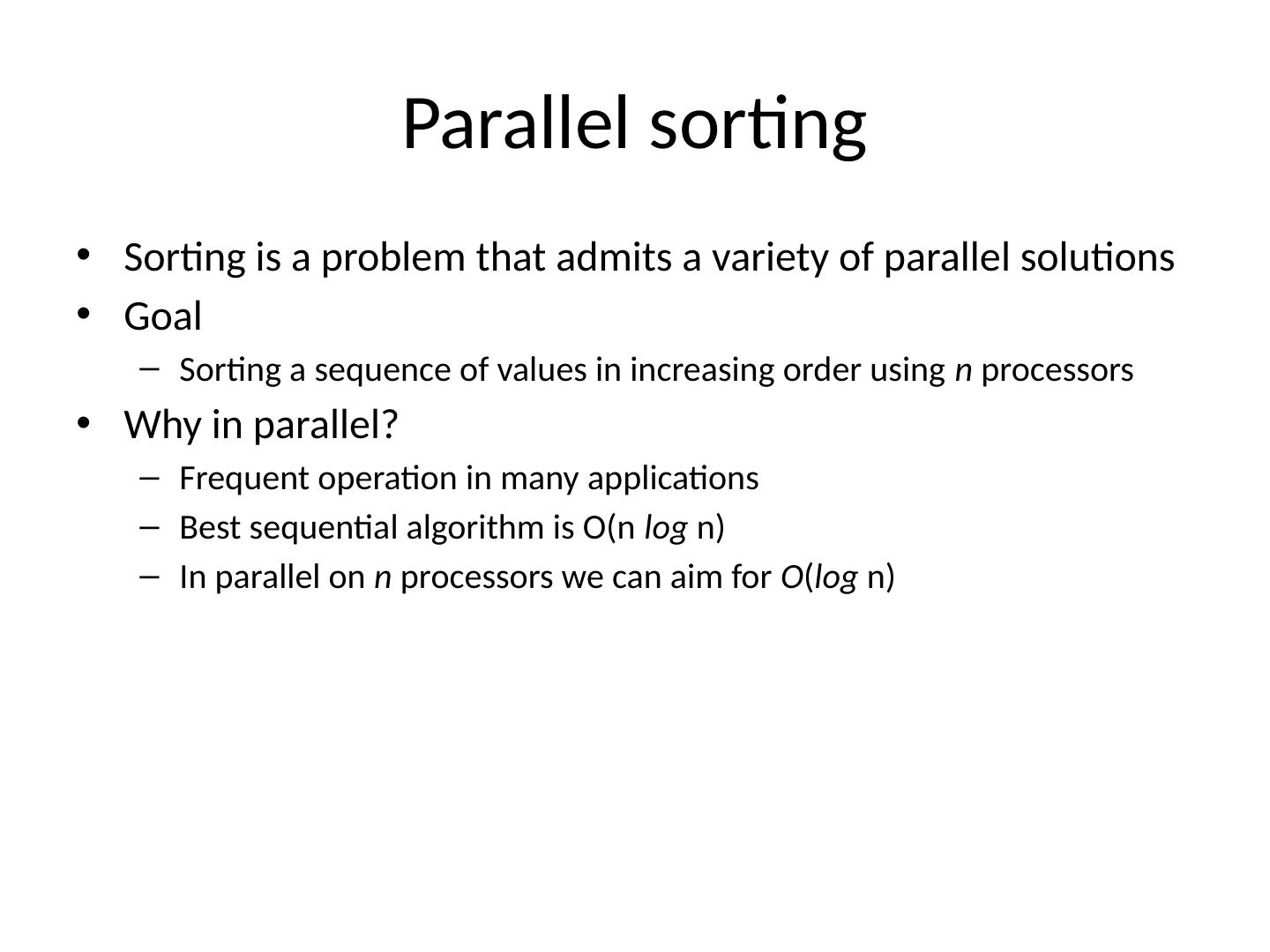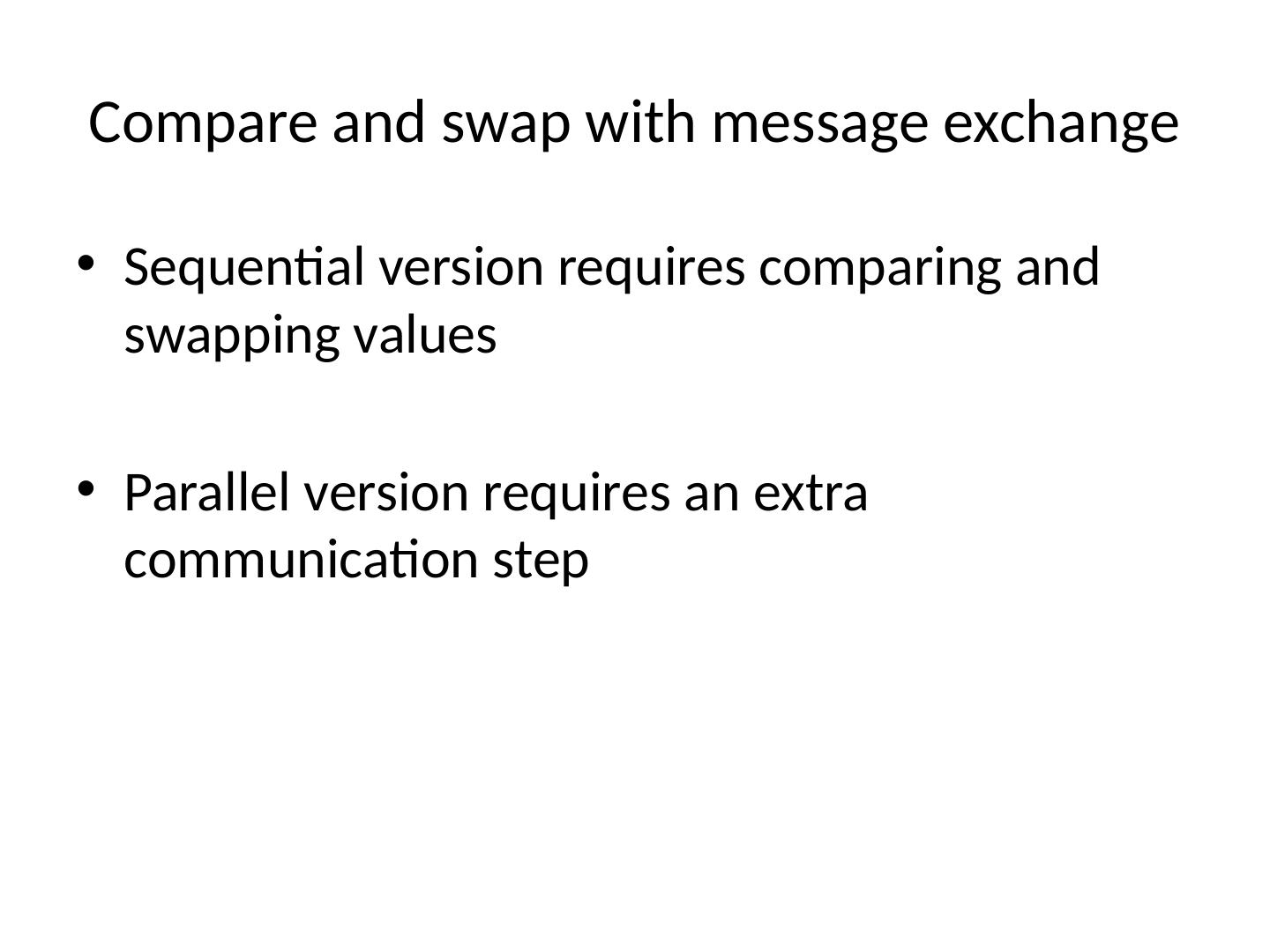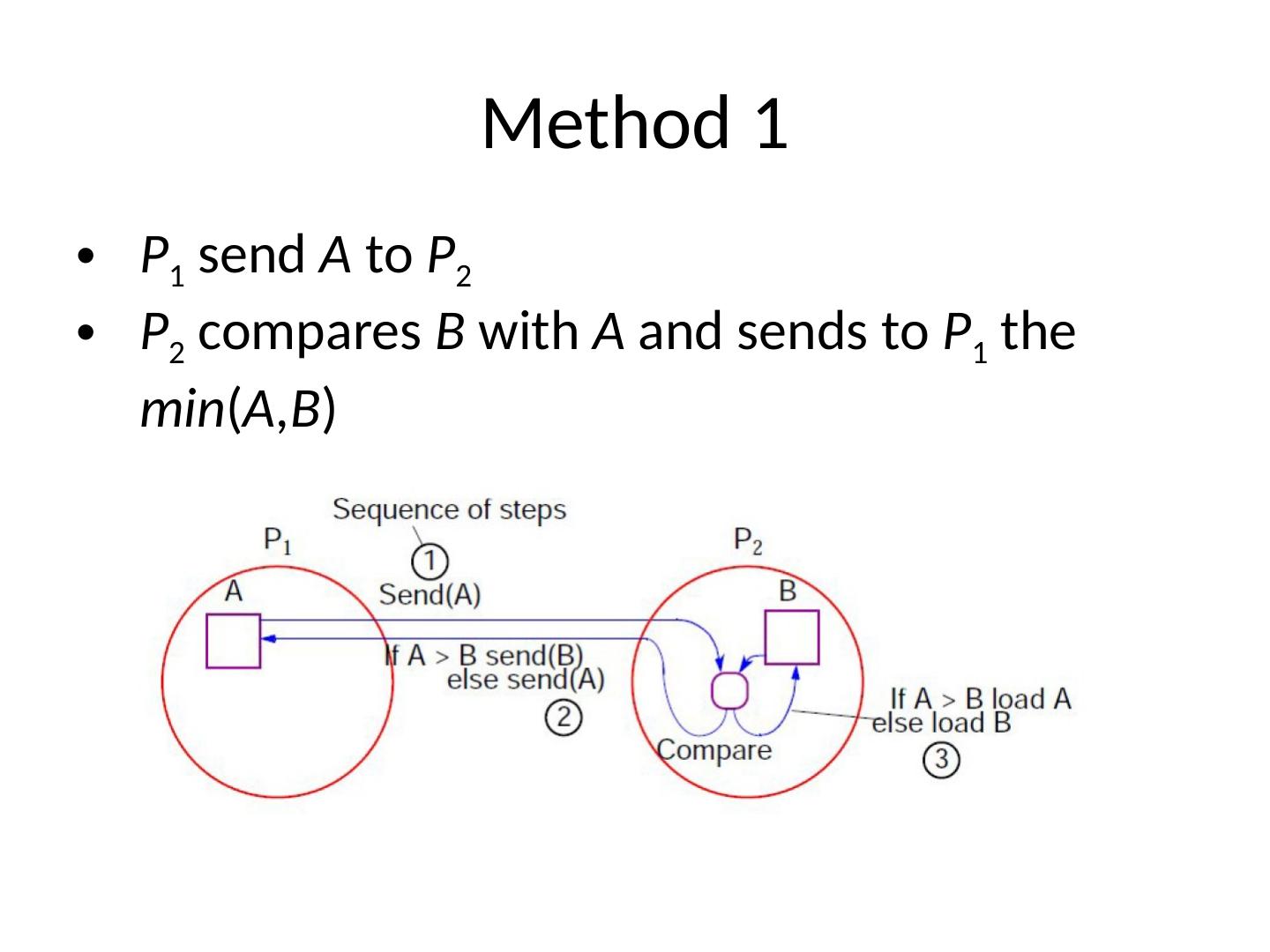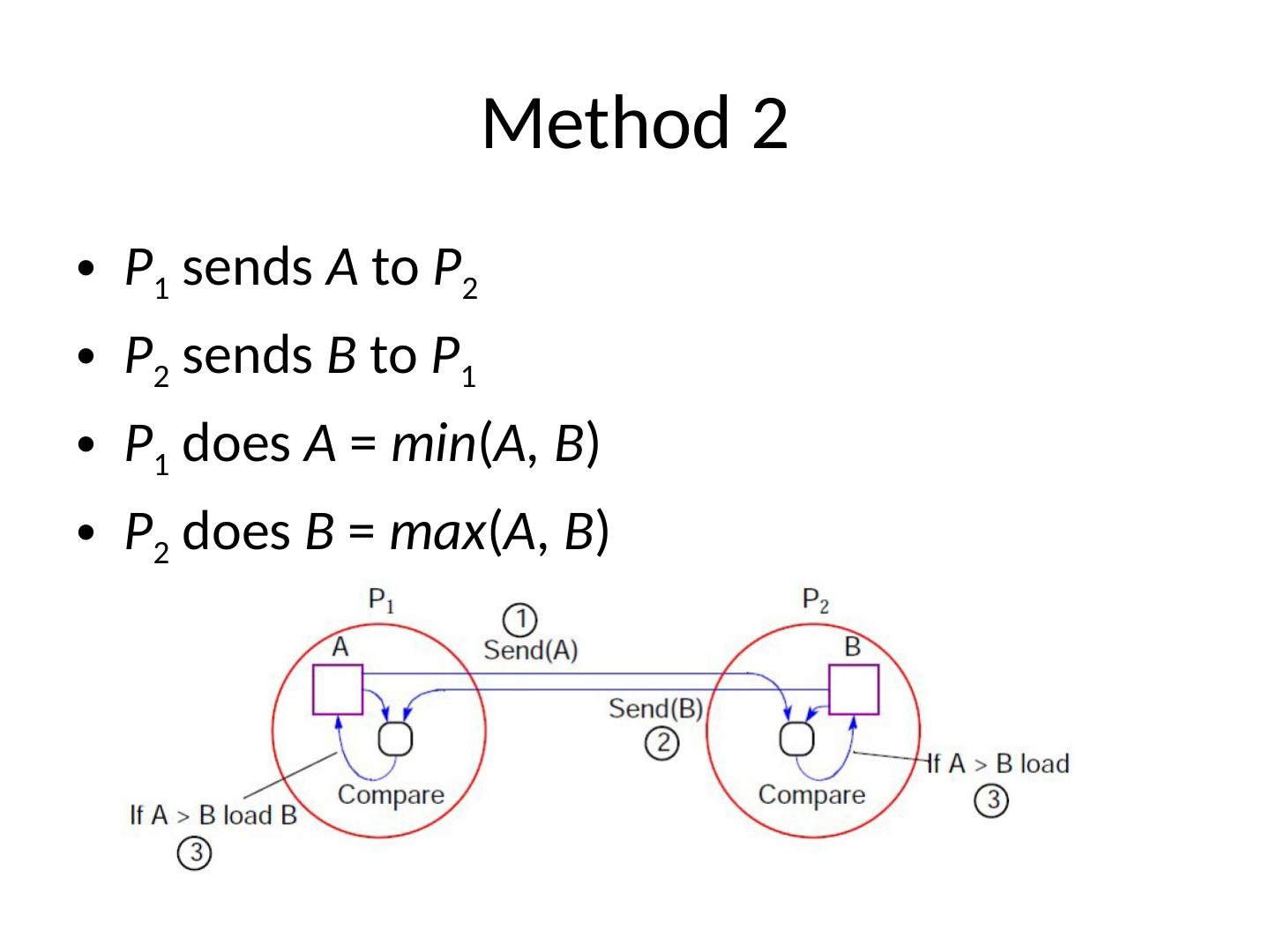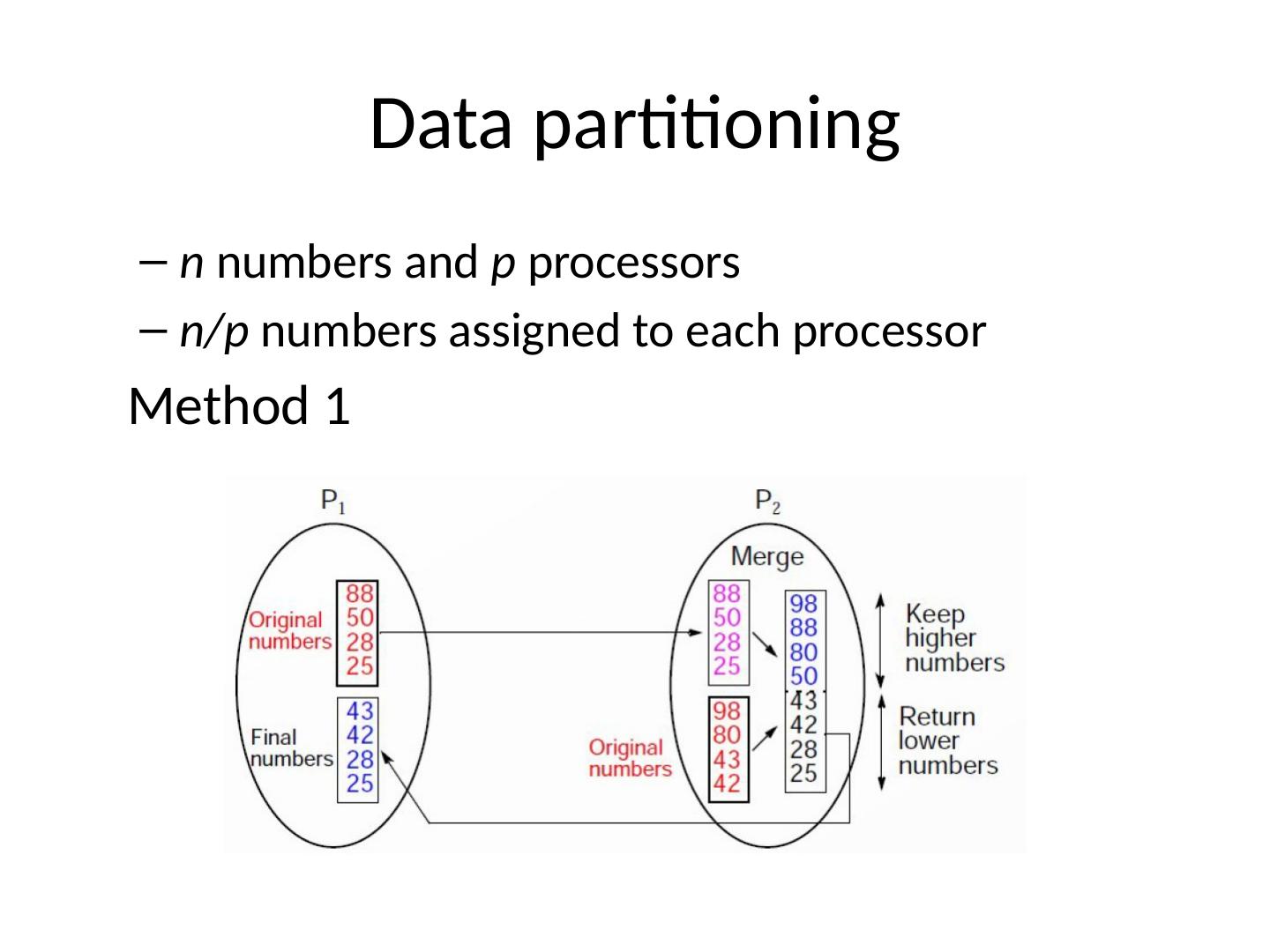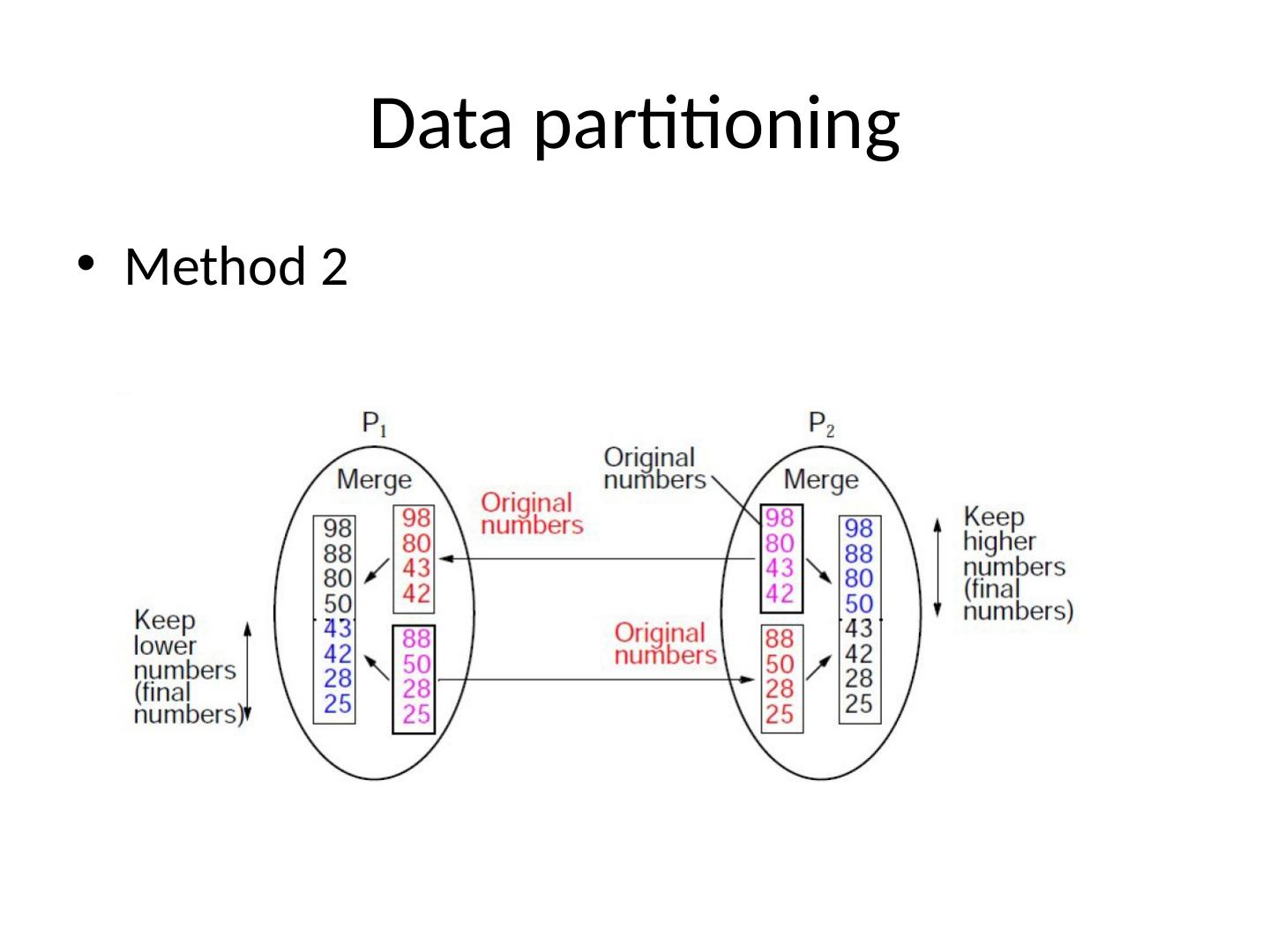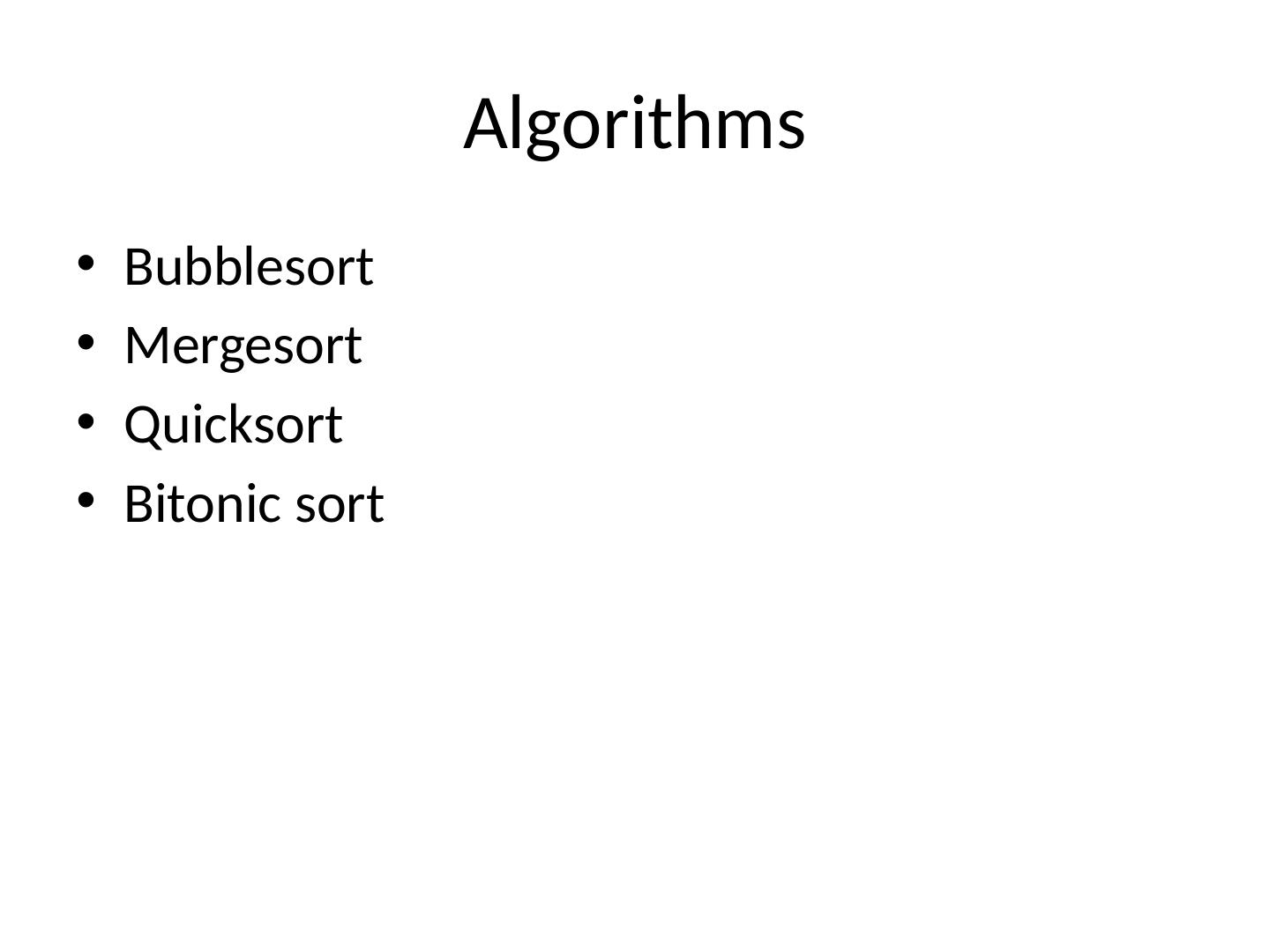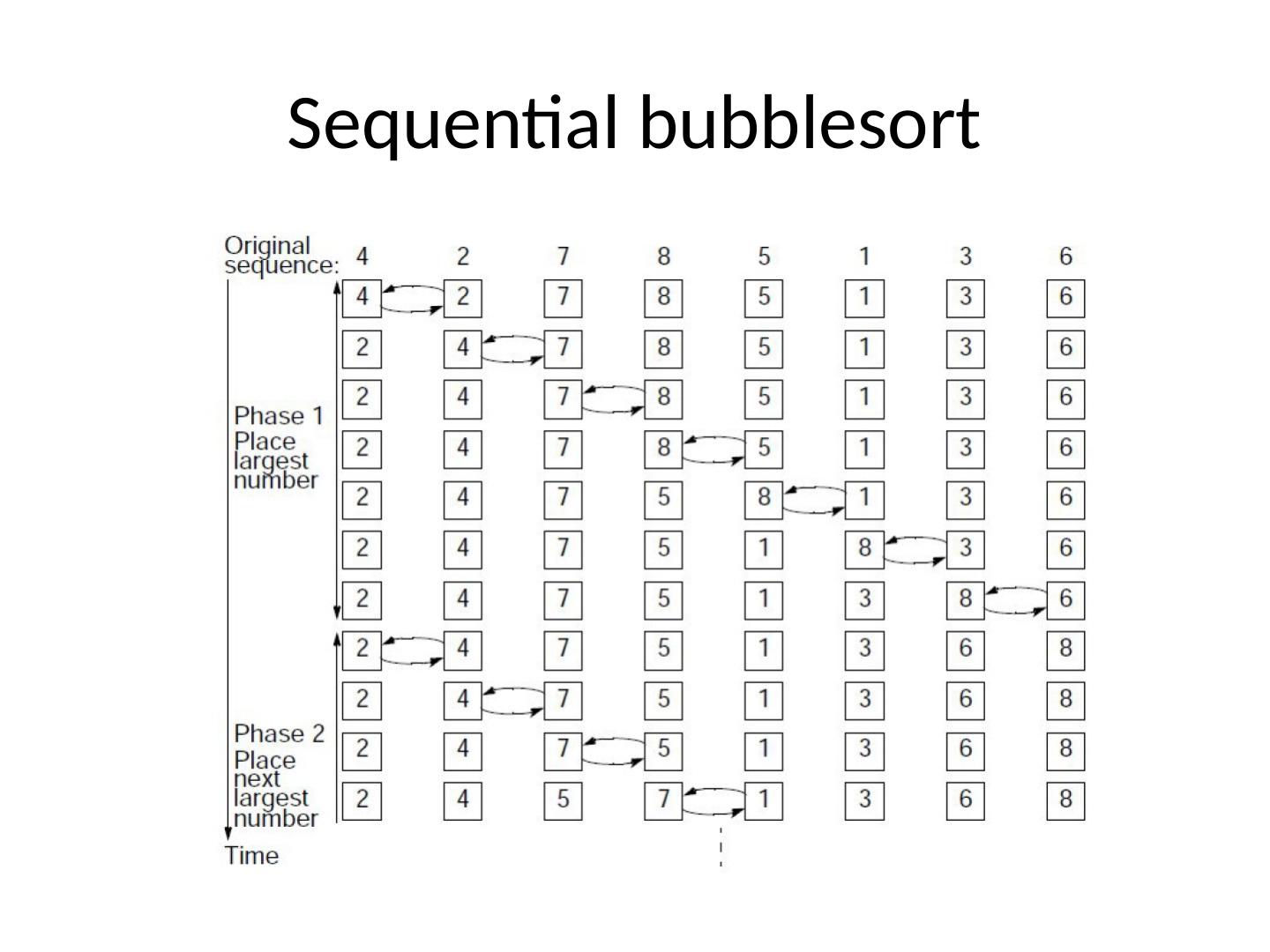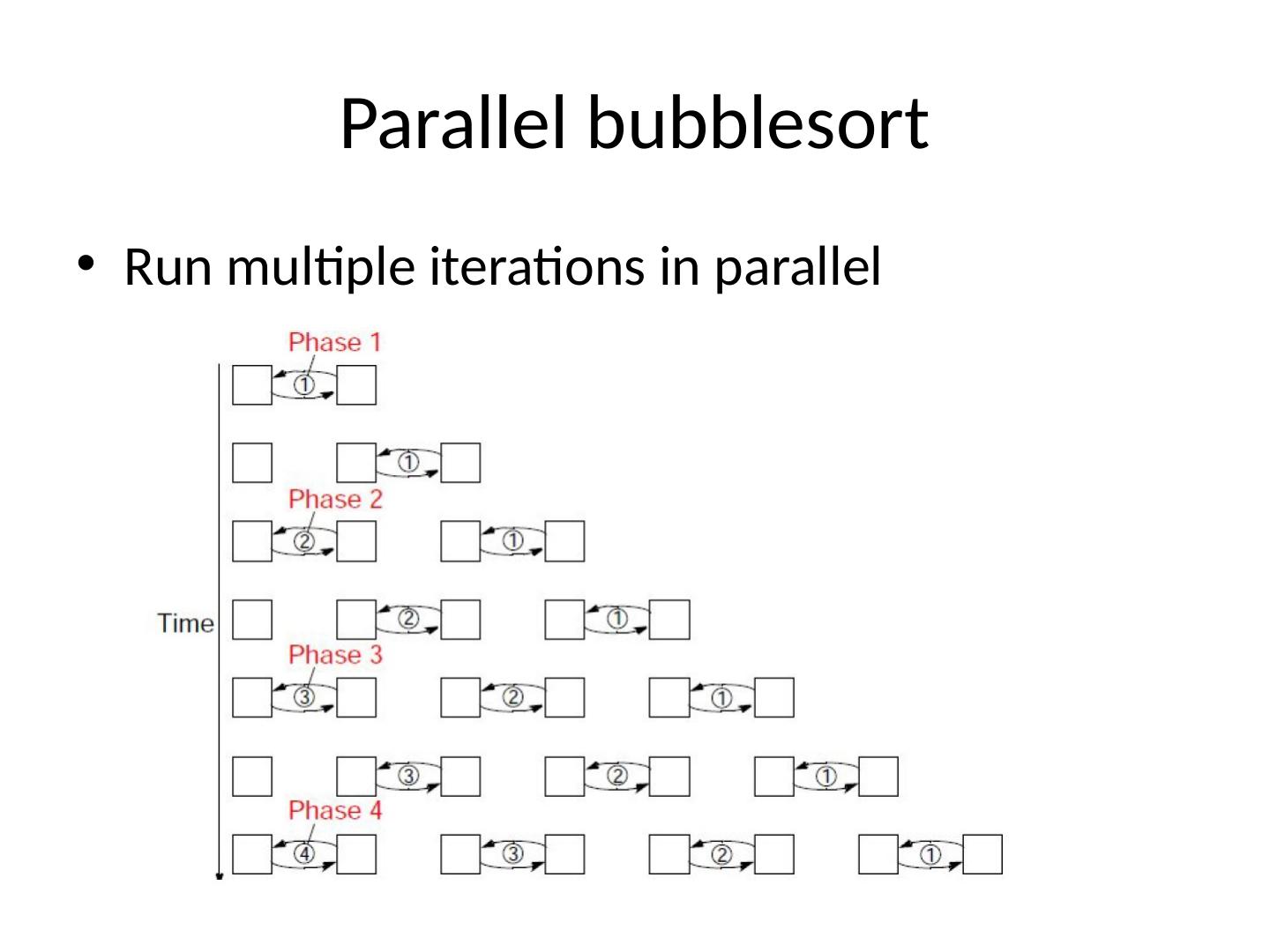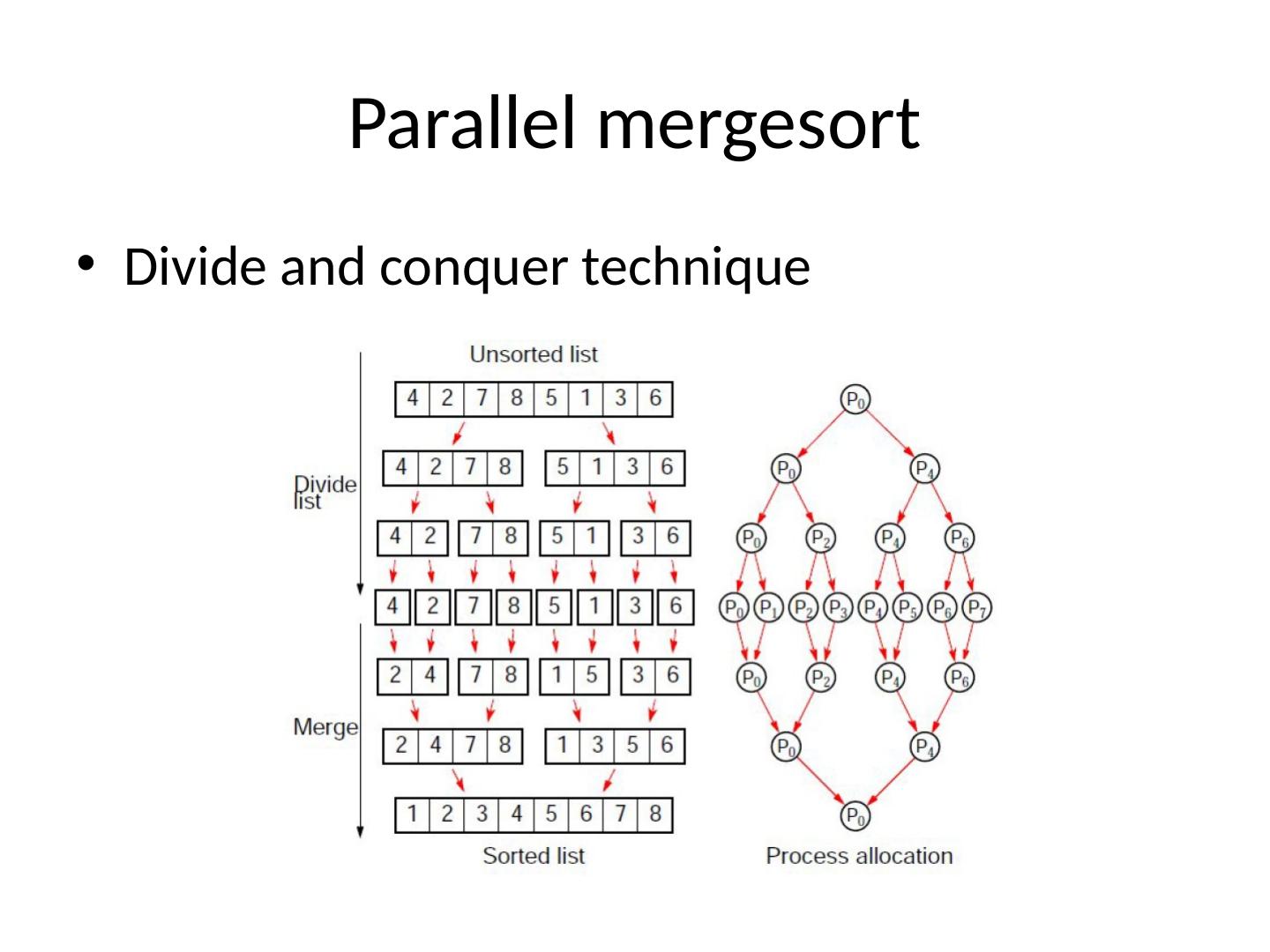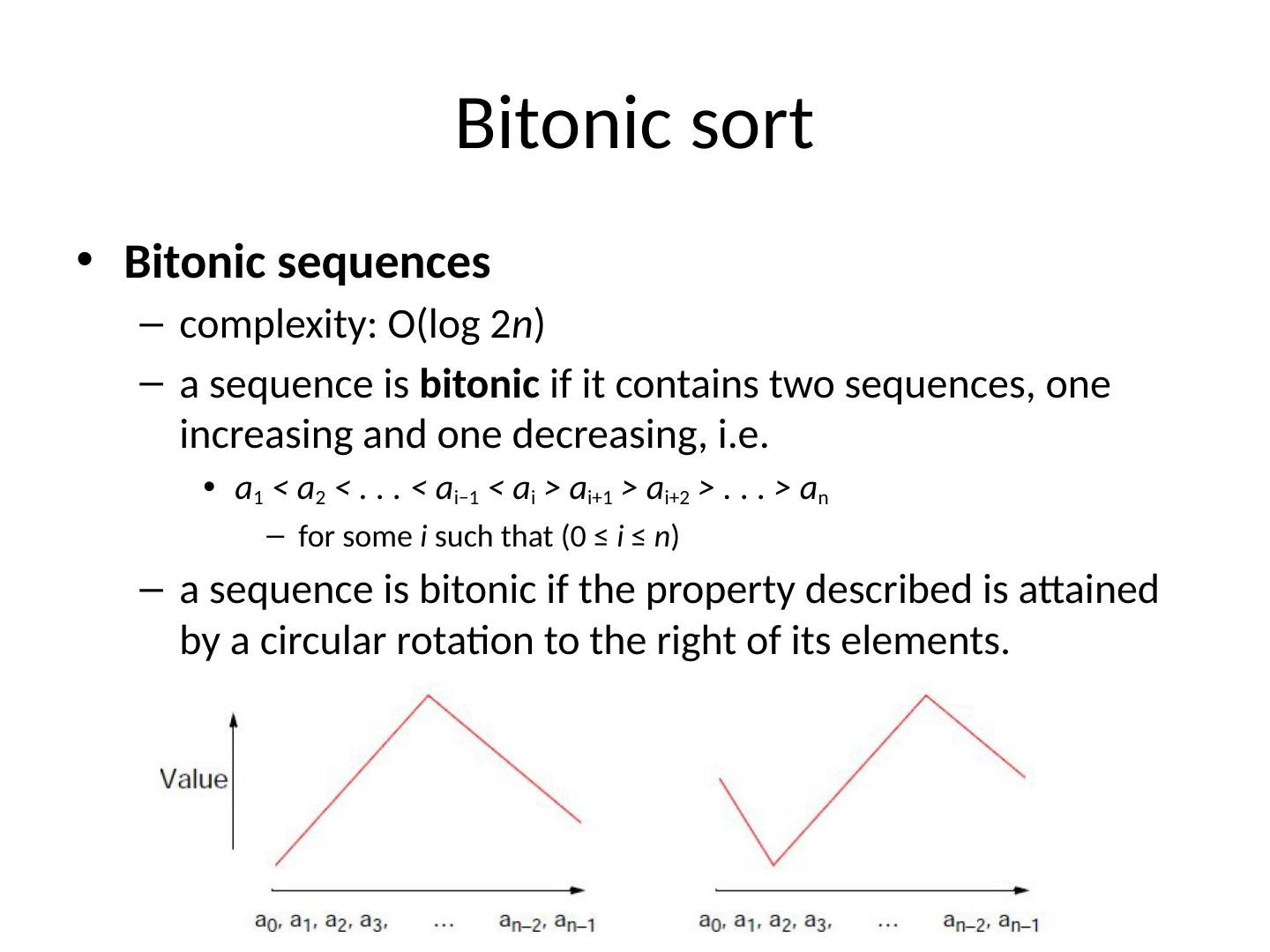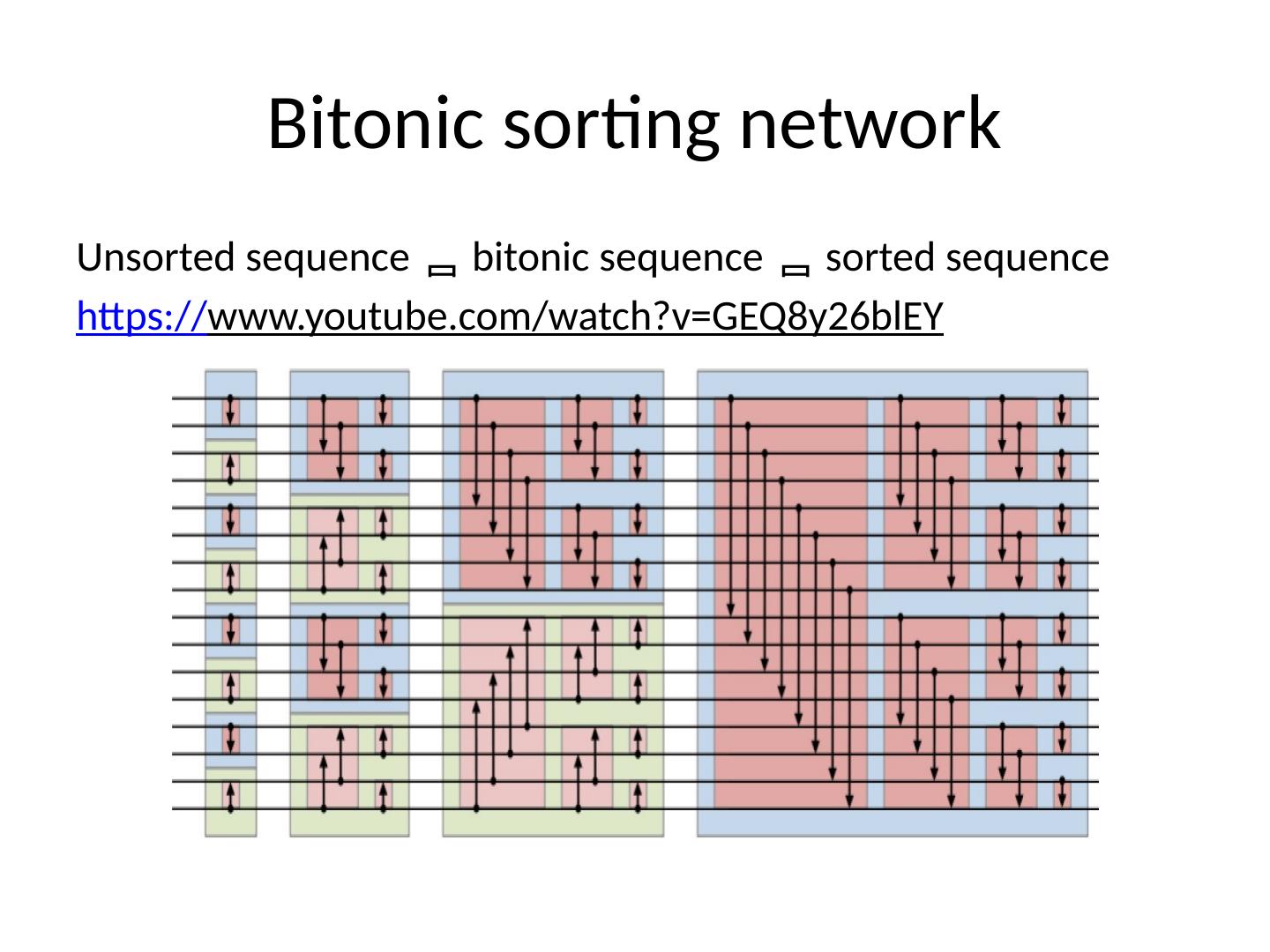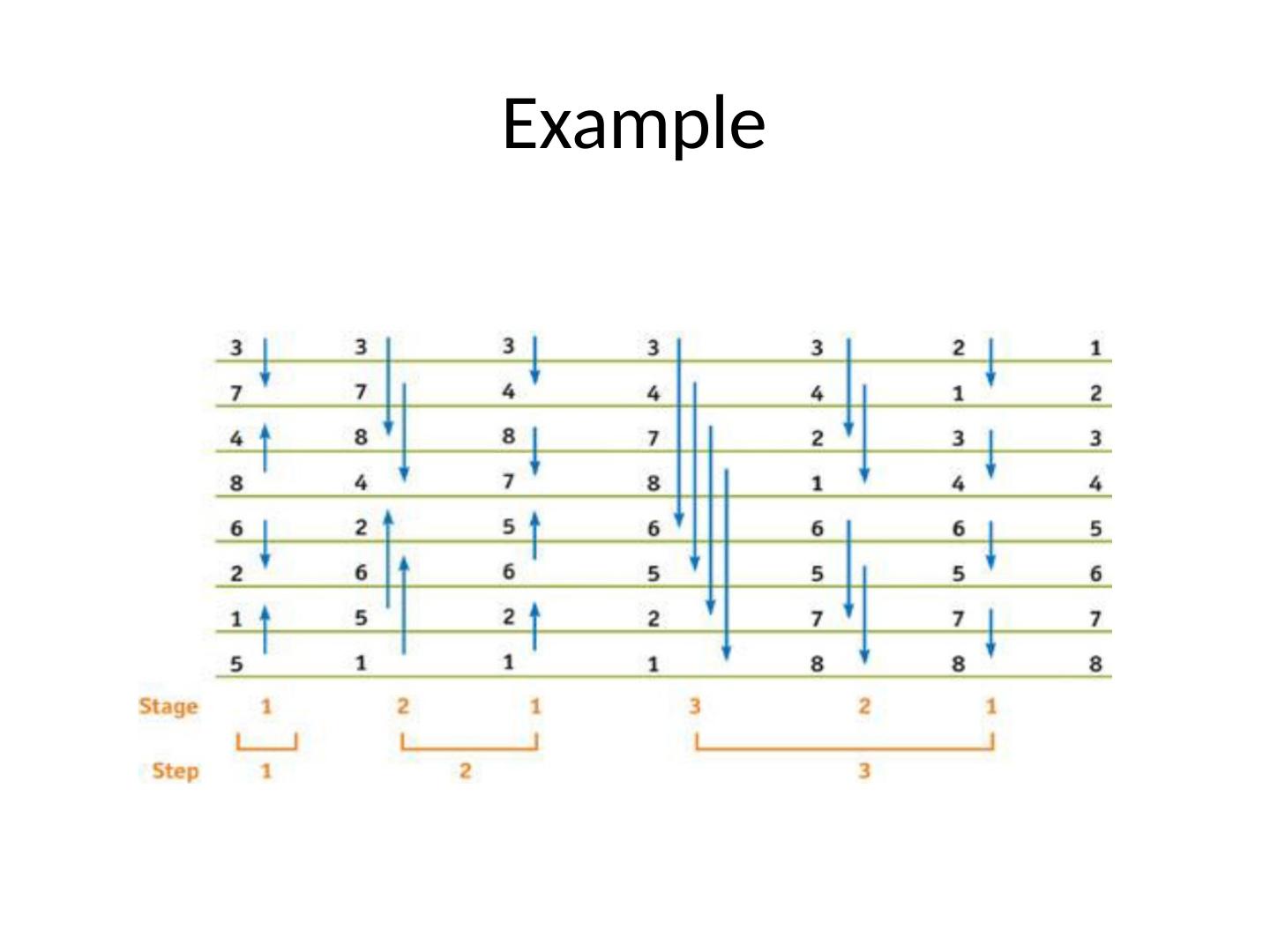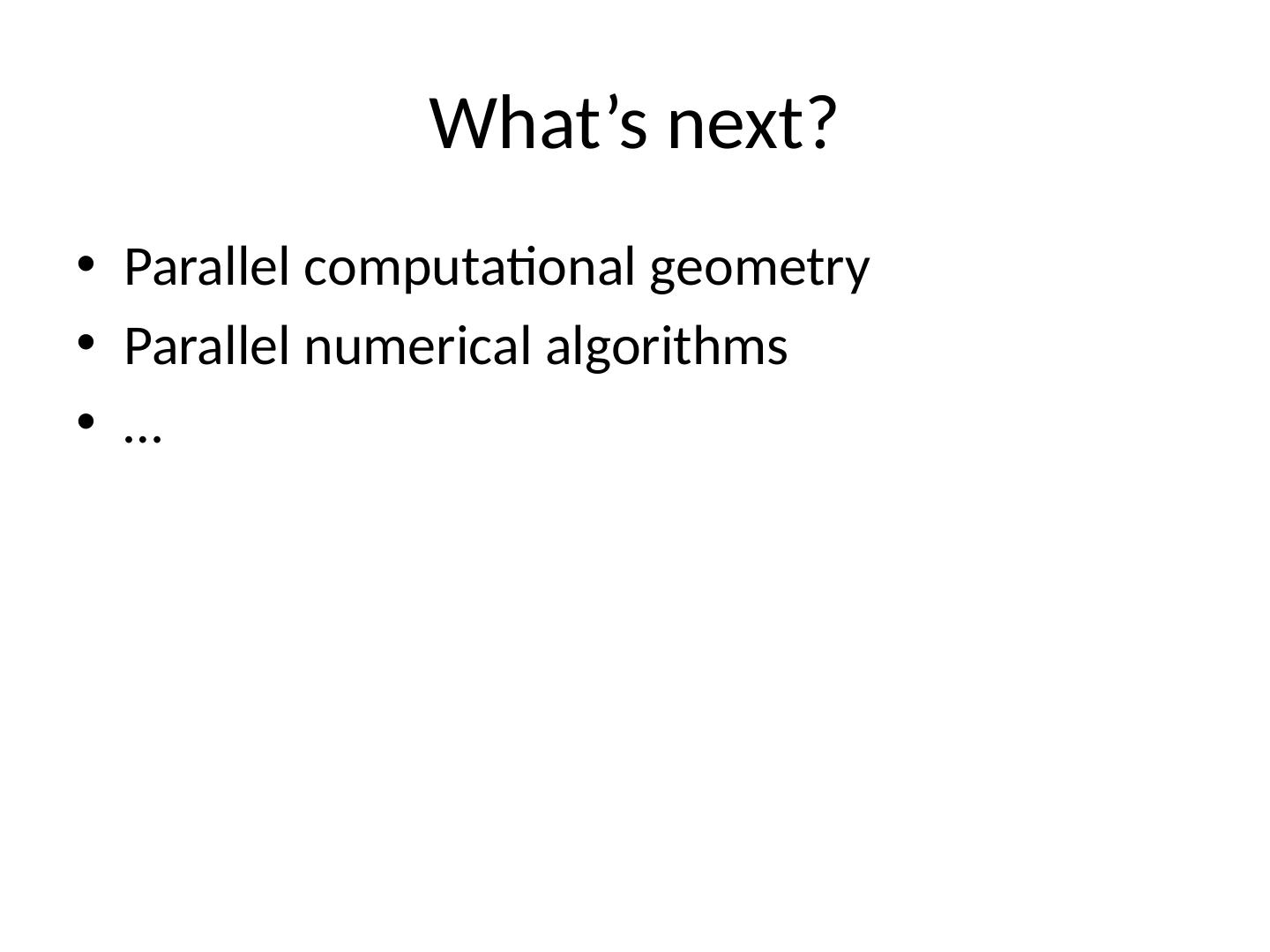- 快召唤伙伴们来围观吧
- 微博 QQ QQ空间 贴吧
- 文档嵌入链接
- 复制
- 微信扫一扫分享
- 已成功复制到剪贴板
08Data Structures and Algorithms---Parallel sorting
展开查看详情
1 .Data Structures and Algorithms in Parallel Computing Lecture 8
2 .Parallel sorting Sorting is a problem that admits a variety of parallel solutions Goal Sorting a sequence of values in increasing order using n processors Why in parallel? Frequent operation in many applications Best sequential algorithm is O(n log n) In parallel on n processors we can aim for O ( log n)
3 .Compare and swap with message exchange Sequential version requires comparing and swapping values Parallel version requires an extra communication step
4 .Method 1 P 1 send A to P 2 P 2 compares B with A and sends to P 1 the min ( A,B )
5 .Method 2 P 1 sends A to P 2 P 2 sends B to P 1 P 1 does A = min ( A, B ) P 2 does B = max ( A, B )
6 .Data partitioning n numbers and p processors n/p numbers assigned to each processor Method 1
7 .Data partitioning Method 2
8 .Algorithms Bubblesort Mergesort Quicksort Bitonic sort
9 .Sequential bubblesort
10 .Parallel bubblesort Run multiple iterations in parallel
11 .Parallel mergesort Divide and conquer technique
12 .Parallel quicksort
13 .Bitonic sort Bitonic sequences complexity: O(log 2 n ) a sequence is bitonic if it contains two sequences, one increasing and one decreasing, i.e. a 1 < a 2 < . . . < a i−1 < a i > a i+1 > a i+2 > . . . > a n for some i such that (0 ≤ i ≤ n ) a sequence is bitonic if the property described is attained by a circular rotation to the right of its elements.
14 .Bitonic sorting network Unsorted sequence bitonic sequence sorted sequence https:// www.youtube.com/watch?v=GEQ8y26blEY
15 .Example
16 .What’s next? Parallel computational geometry Parallel numerical algorithms …




